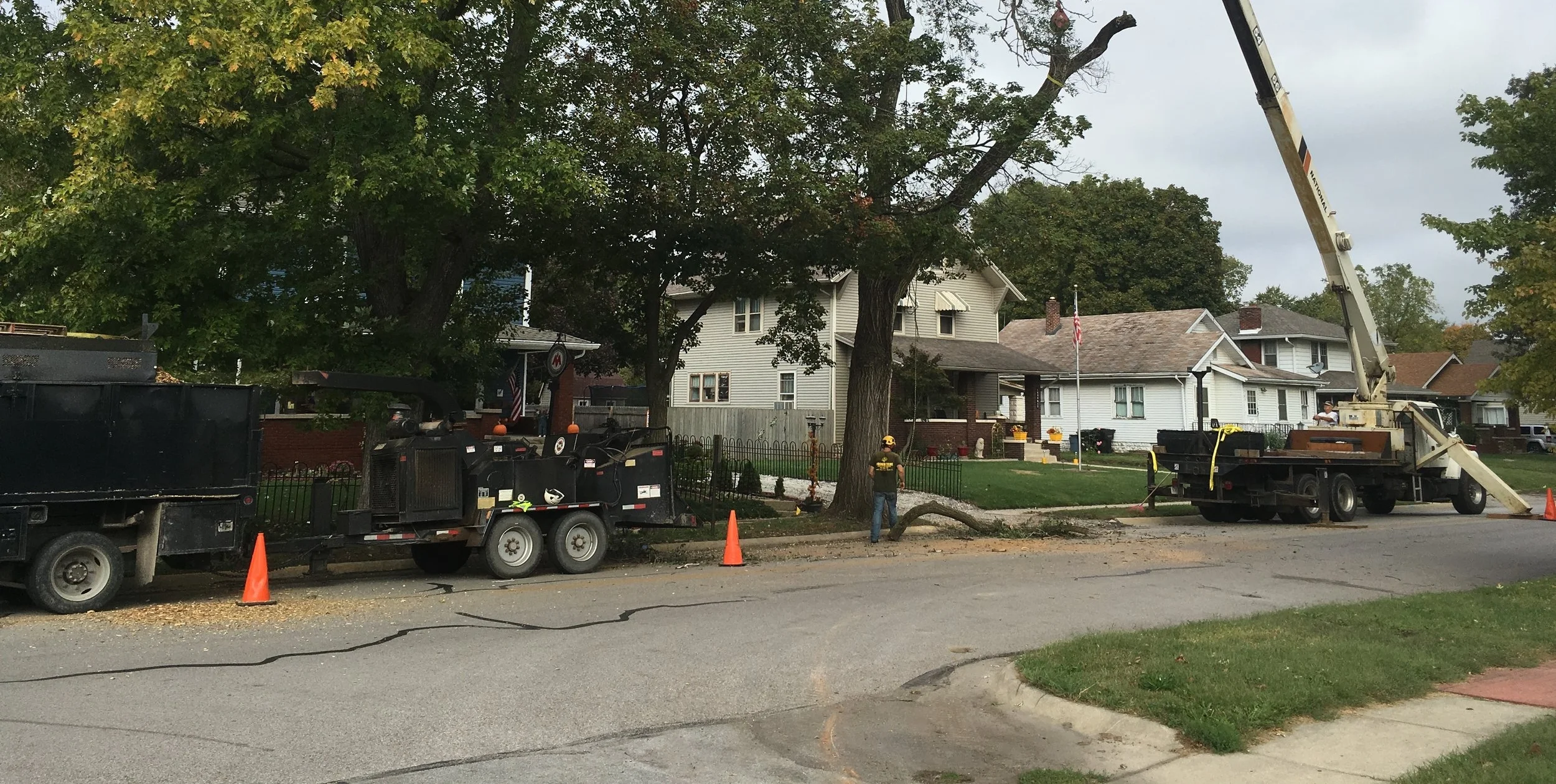Looking for more information related to tree health? Check out our blog on these related topics HERE.
Tree Pests
Emerald Ash Borer
“Emerald ash borers attack all kinds of North American ash trees (Fraxinus spp.) including white, green, and black ash and all horticultural varieties of these trees. All North American ash trees, from the smallest saplings to giant trees, are vulnerable to attack by Emerald ash borers (EAB).”
Signs your tree may be infested with the Emerald Ash Borer (Purdue University Extension*):
- Dieback of leaves
- Vertical Splits
- D-shaped exit holes
- S-shaped channels
- Heavy woodpecker activity
- Water sprouts
- Worm-like larvae
Live in the city of Lafayette, IN? CLICK HERE for more information on the treatment or removal of Ash Trees.
Asian Long-Horned Beetle
“The Asian long-horned beetle originated in Asia and has no natural enemies in the Midwest. He cautioned that the potential damage caused by Asian long-horned beetles is even greater than the risk posed by the emerald ash borer. Trees at risk of Asian long-horned beetle infestation include maple, birch, elm, willow, ash and poplar.” (Purdue University entomologist Clifford Sadof*). Animal and Plant Health Inspection Service (APHIS) reports that maples are the most commonly infested trees in North America. Infested trees do not recover and, therefore, should be removed.
Signs of an infestation start to show about three to four years after the tree is infested. Such trees show these signs*:
- Dime-sized or smaller round exit holes in the tree trunk or branches.
- Shallow oval or round scars in the bark, where the adult beetle has chewed an egg site.
- Sawdust-like materials, called frass, on the ground around the tree or on the branches.
- Dead branches or limbs falling from an otherwise healthy-looking tree.
Tree Diseases
Dutch Elm disease
“DED is caused by a fungus (Ophiostoma ulmi) that is carried from diseased trees to healthy trees via two species of elm bark beetles. It can also spread by root grafts. Despite the destructiveness of Dutch elm disease (DED) many American elms continue to survive, adding grace and beauty to the Indiana landscape.” (Purdue University*)
Ash Yellows
“Ash Yellows is a chronic disease that is present across the forests of Indiana. It is caused by a phytoplasma organism that works in the phloem tissue of the tree. The impacts of this disease are growth loss and mortality.” (Indiana DNR*)
Oak Wilt
“Oak wilt, Ceratocystis fagaecarum, is a serious vascular disease that can infect all oaks but is more deadly to the red oak group than to trees in the white oak group.” (Indiana DNR*)
Other Causes of Tree Death
Soil and Root System Changes
When contractors begin building new homes or commercial buildings, the trees nearby tend to decline in health. Because of the changes in the soil or root systems from construction equipment and grading of the area, trees loose vital nutrients to survive. “Even minor changes to the soil grade or soil profile can produce negative responses from trees. Whether removing or adding soil around the roots of trees, extreme caution is advised.” (Lindsey Purcell, Urban Forestry Specialist, Purdue University Department of Forestry & Natural Resources*).
Storm Damage
If you’re worried about the future of your trees during snow, ice, and wind, don’t worry most trees can withstand and make adaptations to the climates. However there are times when even the strongest tree can’t withstand a major storm. “Trees are lost every year from storm-related events. Major damage to parts of the tree or even the entire tree can result from high winds, snow and ice.” (Lindsey Purcell, Urban Forestry Specialist, Purdue University Department of Forestry & Natural Resources*).
*Sources:
https://www.purdue.edu/newsroom/releases/2017/Q3/destructive-pests-check-your-trees-for-asian-long-horned-beetles.html
https://www.extension.purdue.edu/extmedia/fnr/fnr-faq-11-w.pdf
https://extension.entm.purdue.edu/EAB/
http://docs.lib.purdue.edu/cgi/viewcontent.cgi?article=2108&context=agext
https://www.extension.purdue.edu/extmedia/FNR/FNR-221.pdf
https://www.in.gov/dnr/forestry/files/Indiana_Forest_Health_Problems_2005.pdf










